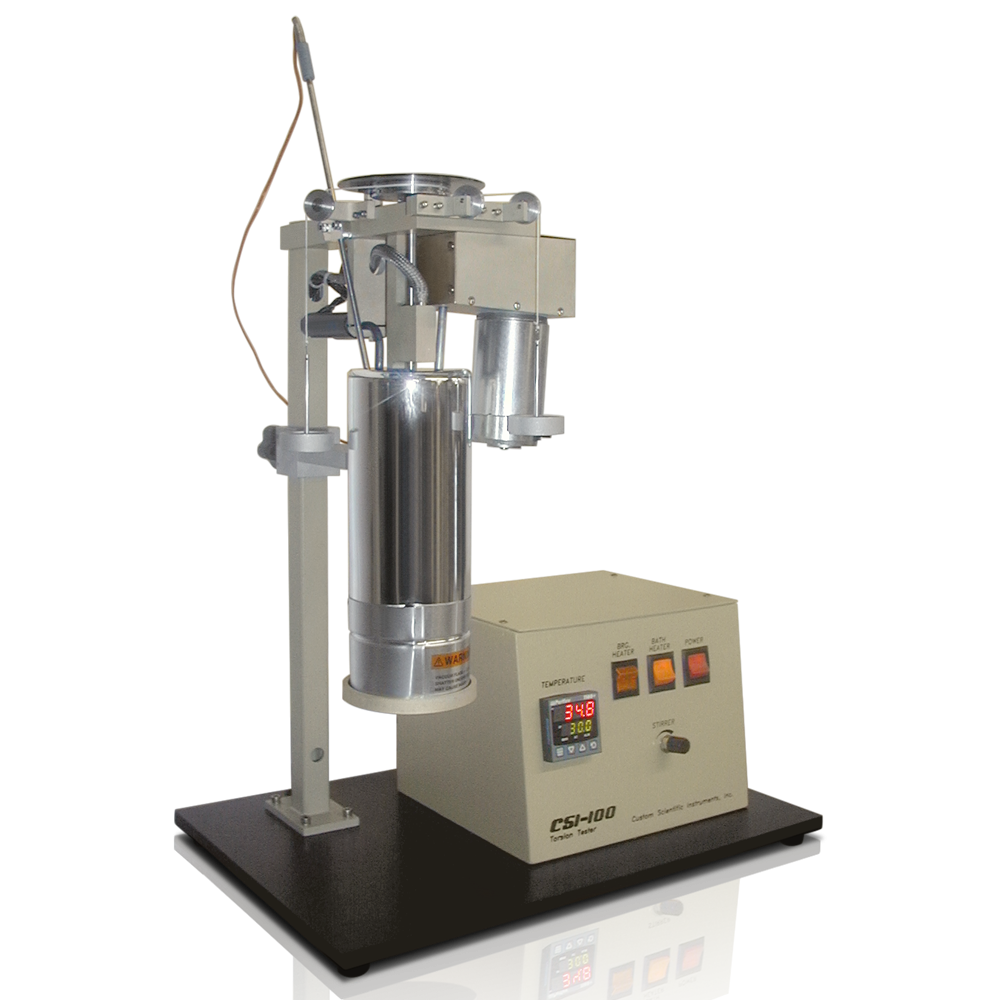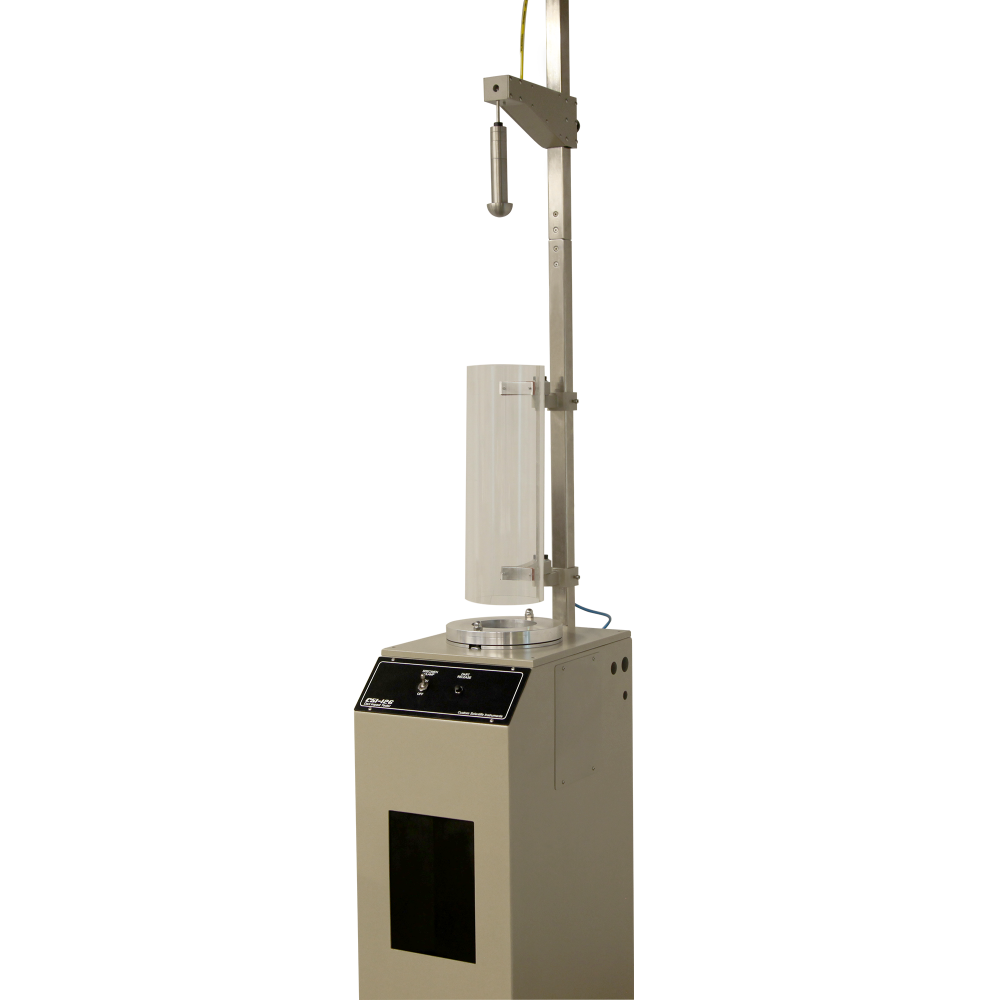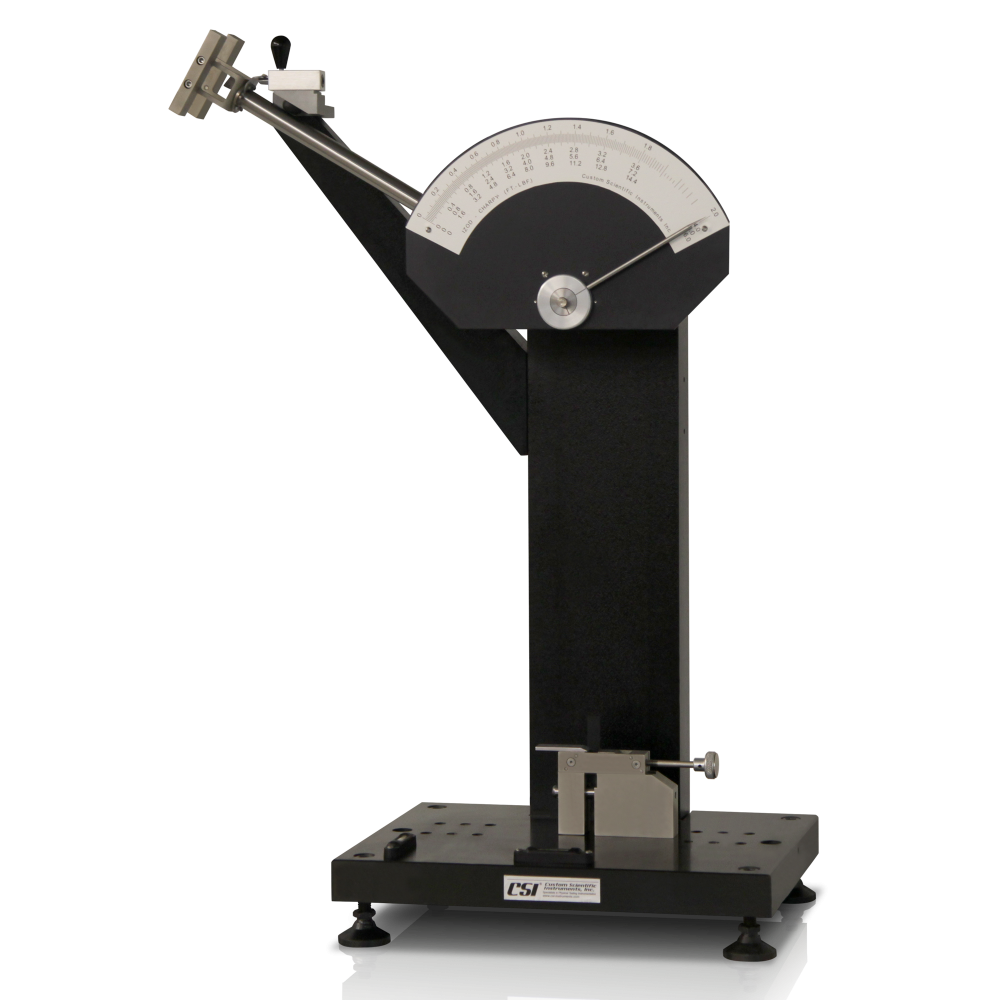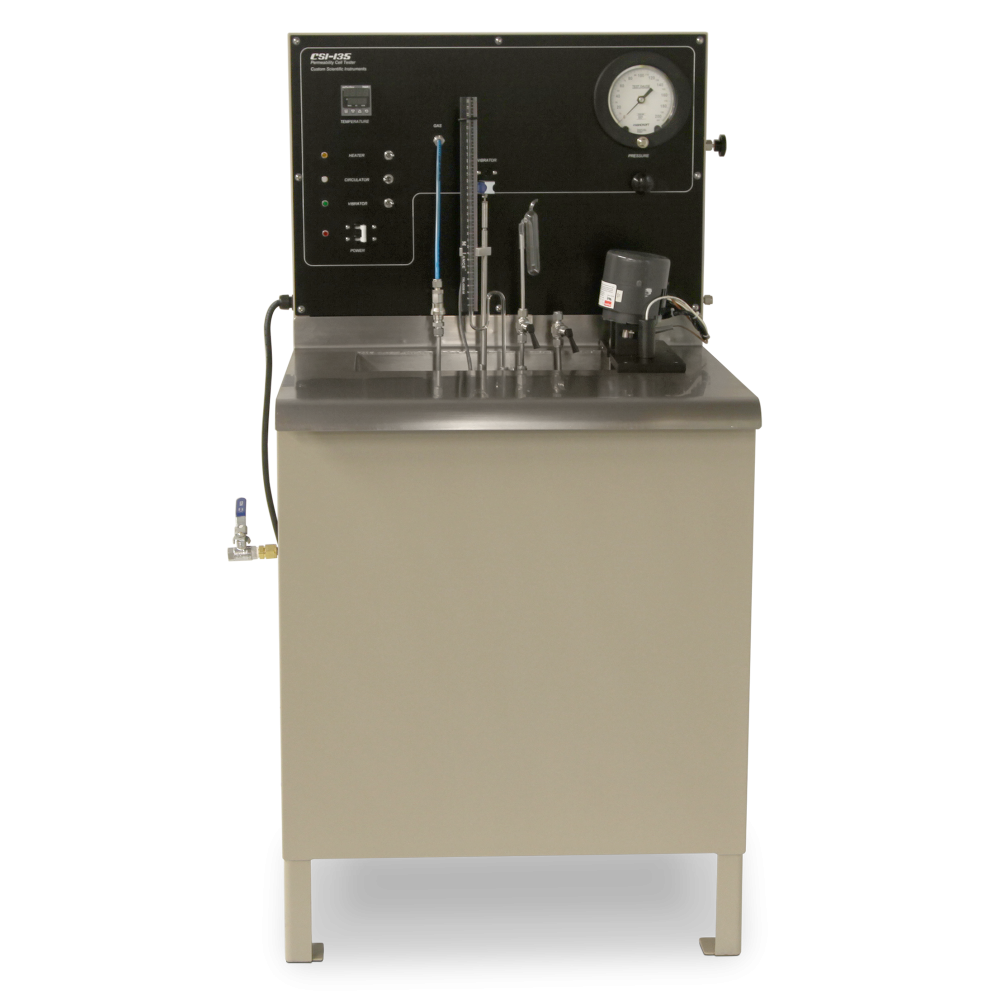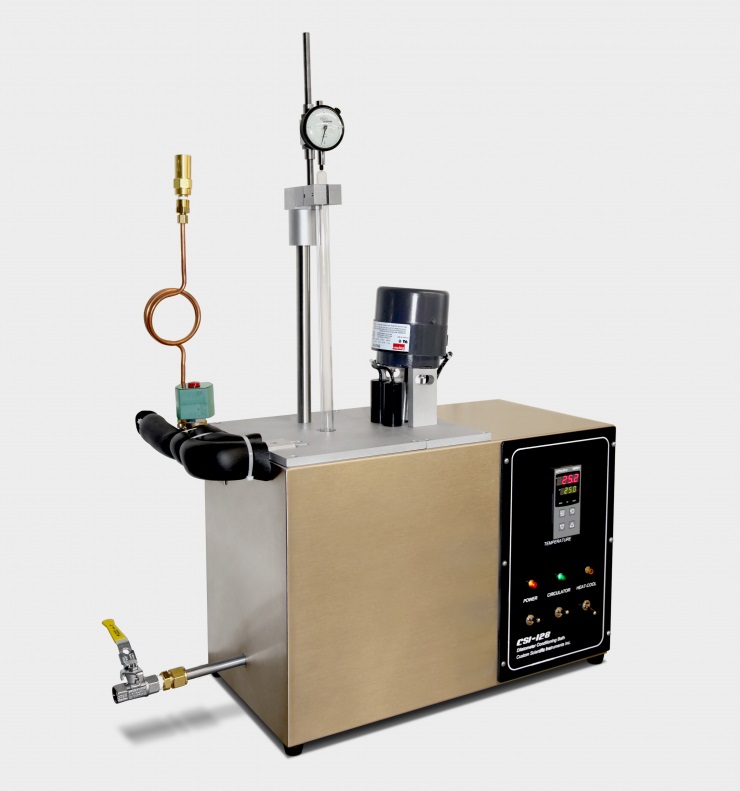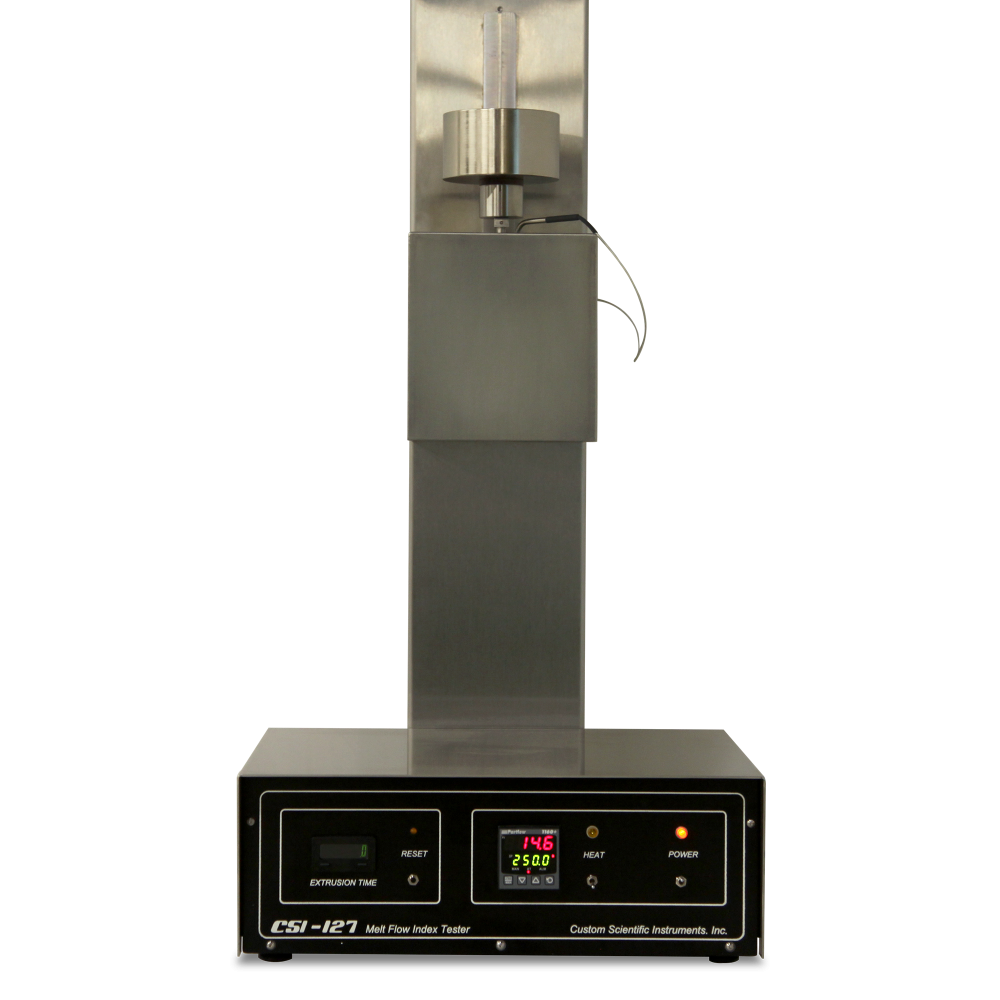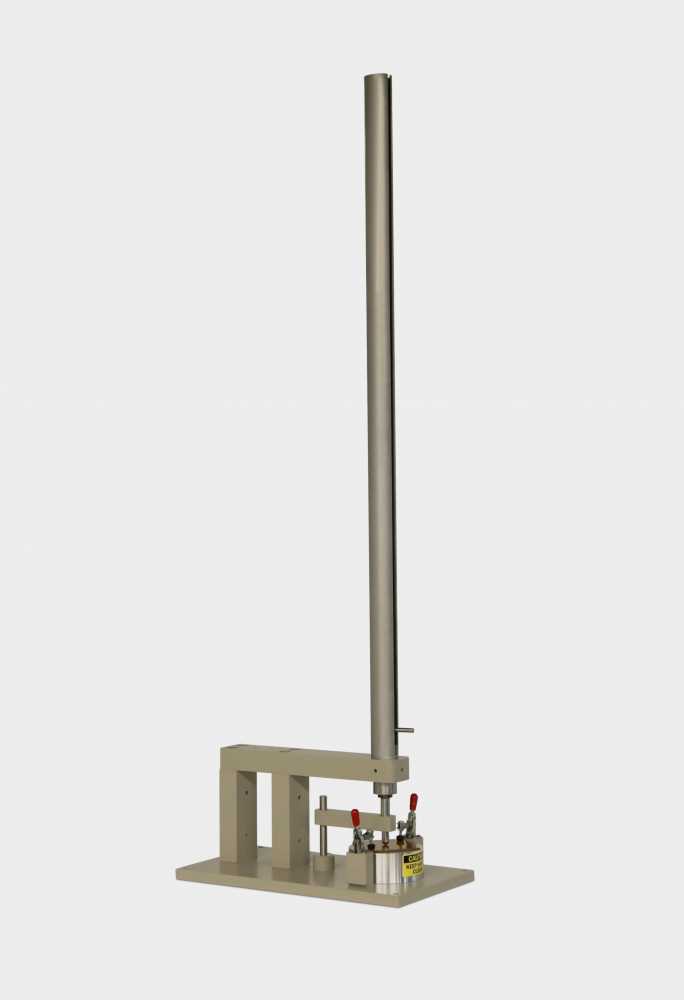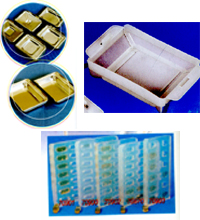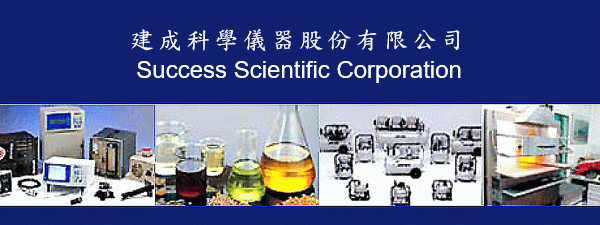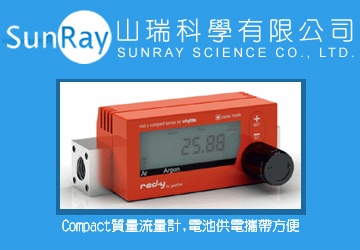
STA 熱重量與熱差同步分析儀器
STA
熱重量與熱差同步分析儀器
Simultaneous DTA/TGA
廠牌:ORTON/U.S.A.
供應商:建成科學儀器股份有限公司
聯絡電話:02-29103818
| 快速詢價 |
熱重量與熱差同步分析儀器 / STA - Simultaneous DTA/TGA Analysis
The Orton Simultaneous DTA/TGA is a powerful thermoanalytical technique that combines a DTA and a TGA into one instrument that performs both DTA and TGA on the same sample at the same time. This instrument or testing technique is sometimes referred to as Simultaneous Thermal Analysis, or STA, or simply ST. The resulting DTA and TGA curves are simultaneously plotted on a dual Y-axis graph so the DTA’s fingerprint and the TGA’s weigh loss/gain characteristics are directly compared as the test sample is heated and cooled.
The photo at the right is the Model ST-730 series simultaneous DTA/TGA System which includes the furnace, differential thermocouple, analytical balance, and furnace control console with user-programmable controller. Although not shown, the system includes Windows 98/2000 compatible data acquisition/analysis software and an analog to digital interface card for the user supplied personal computer system.
A. Characteristics or Properties Measured
The DTA identifies the temperature regions and the magnitude of critical events during a drying or firing process such as drying, binder burnout, carbon oxidation, sulfur oxidation, structural clay collapse, cristobalite transitions, alpha-beta quartz transitions, carbonate decompositions, recrystallizations and melting.
The TGA measures the weight loss of a material from a simple process such as drying, or from more complex chemical reactions that liberate gases, such as structural water release, structural decomposition, carbonate decomposition, sulfur oxidation, and fluoride oxidation. The TGA also measures the weight gain of a material from a simple process such as re-hydration, or from more complex surface reactions from reactive gas atmospheres.
Examples of Applications
The test results are a dual Y-axis graph of the DTA signal (microvolts) on one Y-axis and the TGA signal (actual weight loss or gain converted to percent weight loss) on the other Y-axis plotted versus the sample temperature on the X-axis. Sample graphs of enhanced standard outputs are shown below.
Principle of Operation
The standard Orton Simultaneous DTA/TGA uses a pan balance, in which the sample and reference cups are supported by a pair of vertical thermocouples (differential thermocouple) positioned on the balance load cell (concept sketch below).
After both cups are placed on top of the differential thermocouple stalks, the furnace is lowered over the cups, the balance is zeroed, and the furnace is heated and cooled according to the programmed thermal cycle. The differential thermocouple output (DTA signal) and balance output (TGA signal) are continuously recorded, displayed on a PC monitor, and stored on the PC for post testing analysis.
B. Standard Simultaneous DTA/TGA Instruments from OrtonThe standard Orton Simultaneous DTA/TGA uses one of two pan balances with different sensitivity ranges, and an appropriate furnace for the desired temperature range.
| 機 器 型 號 | ST-732 | ST-736 | ST-742 | ST-746 |
|---|---|---|---|---|
| Temperature Range |
RT to 1,200°C |
RT to 1,600°C |
RT to 1,200°C | RT to 1,600°C |
| Sample Volume |
150 cubic millimeters | |||
| Sample Size |
up to 0.3501 | |||
| Sample Cup Material |
High Alumina | |||
| Sample Cup Size |
Boersma | |||
| Differential Thermocouple |
Type "S" | |||
| DTA Sensitivity2 |
< 0.0005 | |||
| TGA Sensitivity3 |
100 |
10 | ||
| Range of Sample Weight Change (%) |
5% to 33% |
2% to 20% | ||
| Atmospheres |
Air, Argon, Nitrogen | |||
| Electrical Power Requirment |
120 VAC, 15 amp, 60 Hz | |||
| Cooling Water |
> 1 gallon / minute | |||
| Warranty and Service |
Warranty Info | |||
Note: assume a material with a green specific gravity of 2.35 g/cc
下載本目錄文件請使用 PDF 檔案程式Download a PDF brochure on the Orton STA (537 kb PDF)
Orton Model ST-730 / 740 Series Simultaneous DTA/TGA brochure
For low weight change testing, see the section on High Performance DTA/TGA Systems
Frequently asked Questions
Sample Size
The Orton Simultaneous DTA/TGA instruments have been specifically designed for ceramics and other materials that require sample sizes larger than DSC’s to insure sample homogeneity.
Temperature Ranges / Furnace Type
Room Temperature to 1,200°C Kanthal wire wound heating element
Room Temperature to 1,600°C Platinum alloy wire wound heating element
Heating Rates / Thermal Cycle
DTA’s are generally performed with fast heat up rates, and TGA’s are generally performed with slow heat up rates. Since both tests are performed at the same time with the simultaneous unit, a compromise heat up rate must be used. A typical simultaneous DTA/TGA heat up rate for ceramic materials is 10°C per minute. Other rates are possible by simply changing the thermal cycle on the system’s PID furnace controller.
Most ST tests are performed at a standard heating rate to the maximum temperature, then discontinued. With the Orton systems, the thermal cycle can be extended to include the cooling data. In addition, other programmed cycles that contain multiple ramps and soaks, such as actual production drying or firing schedules, are possible.
Computer Analysis
All Orton ST's are supplied with data acquisition and analysis software for the user's PC. The software displays the test progress on the monitor, stores the data and enables the user to perform the standard DTA and TGA analysis on the data.
Atmospheres
The Orton Model ST-730/740 series systems are designed for standard ceramic applications. The Model ST-730/740 series systems are equipped with an atmosphere port and simple control flow valve for flowing air, argon, or nitrogen through the testing chamber. To keep manufacturing costs down and to keep operation simple, these Orton systems are not sealed for vacuums, corrosive atmospheres, or ultra low oxygen content atmospheres. Other Orton systems are designed for controlled atmosphere operation.
C. High Performance DTA/TGA Systems
For low weight change testing, a more sensitive, higher precision balance is required. Orton uses an overhead, continuous recording electro-balance for these applications.
For controlled atmosphere testing, a sealed balance and heating chamber is required. Orton uses a sealed, overhead, continuous recording electro-balance with a sealed heating chamber for these applications.
A true simultaneous DTA/TGA is a system in which the same sample is used for both weight loss (TGA) and energy change (DTA) measurements. Whenever an overhead balance is used in a true simultaneous DTA/TGA, the mechanical fixturing required to suspend the two sample cups plus their buried thermocouples without impacting free movement of the balance becomes more sophisticated. Sample loading and maintenance is more complicated as a result. Orton has simplified the mechanical arrangement, made sample loading and unloading easier, and reduced the maintenance costs by manufacturing a Concurrent DTA/TGA.
Concurrent DTA/TGAA Concurrent DTA/TGA places two samples inside the same heated chamber for simultaneous testing. One sample is used for the DTA, and the other is used for the TGA. The two DTA thermocouple stalks and cups are inserted into the heated chamber from the bottom and are position immediately next to the TGA sample cup which is suspended from the overhead electro-balance. The DTA system is mechanically independent from the extremely sensitive analytical balance system, greatly simplifying the mechanical arrangement. Since both samples are in immediate proximity they are experiencing identical thermal and atmosphere conditions, so there is no compromise on the quality of the data generated.
The Concurrent DTA/TGA is an ideal system for advanced research applications where weight losses (or gains) are small, or when vacuums or aggressive atmospheres are required.
Concurrent DTA/TGA Models
|
Model Number Series |
CST-720-1000 |
CST-720-2000 |
|
Room Temperature to 1,200 °C |
CST-722-1000 |
CST-722-2000 |
|
Room Temperature to 1,600 °C |
CST-726-1000 |
CST-726-2000 |
|
DTA Sample Volume (cubic millimeters) |
150 |
150 |
|
DTA Sample Size (grams)* |
0.350 |
0.350 |
|
DTA Sample Cup Material |
High Alumina |
High Alumina |
|
DTA Cup Design |
Boersma |
Boersma |
|
Differential Thermocouple |
Type “S” |
Type “S” |
|
DTA Sensitivity (micro-volts) |
< 0.0005 |
< 0.0005 |
|
TGA Sample Size (grams)* |
0.100 |
0.100 |
|
TGA Sample Cup Material |
Platinum |
Platinum |
|
Range of Sample Weight Change |
0 to 100% |
0 to 100% |
|
Weight Change Range (grams) |
0.000 to 0.350 |
0.000 to 0.350 |
|
Balance Capacity (grams) |
100 |
3.500 |
|
Max. Balance Change Capacity (grams) |
10 |
0.150 / 0.750 |
|
Balance Sensitivity (micro-grams) |
1.0 |
0.1 |
|
% Sensitivity Range |
< 0.0003% |
< 0.0000% |
|
Atmospheres / Vacuum |
Yes |
Yes |
| Electric Power |
120 VAC, 15 amp, 50/60 Hz |
120 VAC, 15 amp, 50/60 Hz |
| Cooling water to open drain |
<1 gallon/minute |
<1 gallon/minute |
* Note: assume a material with a green specific gravity of 2.35 g/cc


















